Is Illegal Immigration a Problem for Arizona?
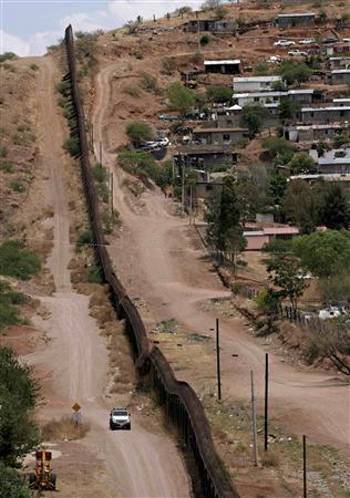
Life along the Boarder
Illegal immigration continues to affect the lives of the Arizona ranchers. “The number of illegal immigrants in Arizona in the last decade has soared, the twin forces of immigration surges and economic distress have prompted Arizonans to push several strict measures to crack down on illegal migrants (Watanabe, Gorman & Riccardi, 2010 LA Times). It is reported that Arizona has a very “White and conservative electorate” (Watanabe, Gorman & Riccardi, 2010 LA Times). This fact will help strict immigration policy to rein over Hispanics. According to the Los Angeles Times, 11.7% of the registered voters are Hispanic, but are in disagreement when it comes to illegal immigration policy. Immigration supporters lack the capital and the organization to be considered a contender in stopping or slowing illegal immigration reform.
Illegal Immigration is Harmful to Society
Illegal immigration harms Arizona. “Arizona’s 5.7 million population includes an estimated 500,000 illegal aliens, which means that nearly 1 in 10 people are in Arizona illegally” (Wittens & Nagtegaal, 2006 Budsimmons). Besides the committing of violent crimes by illegal immigrants, politically speaking, it costs a ridiculous amount of money to pay for education, health care, and incarceration costs. The simple point is that the money that illegal immigrants earn does not support the community in which they live, “Mexican immigrants alone will send as much as $20 billion in cash this year to relatives in Mexico, according to projections by Mexico’s Central Bank” (Wittens & Nagtegaal, 2006 Budsimmons). According to the Center for Immigration Studies, nearly one in five babies in Arizona is born to a mother living in the country illegally, these children are commonly known as anchor babies. When these anchor babies turn 21 years of age they can sponsor their parents (who arrived in the U.S. illegally) for permanent residency.
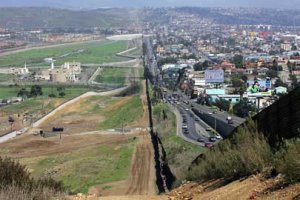
Immigration Policy Passed/and Halted
Arizona had passed law SB 1070 that affects the citizens of Arizona. The law states: police are required to determine the immigration status of arrestees and other persons they encounter if police suspect that those arrestees or other persons jumped the border. The law also required police to cooperate with federal immigration authorities and remand illegal’s to the custody of federal immigration authorities. As well, it declared that illegal’s in the state were, in essence, trespassing, and prohibited employers from stopping at street corners to pick up illegal-alien workers (Kirkwood, 2011 New American).
The Obama Administration halted the Arizona legislation based on Immigration law being a federal. Arizona Attorney General, Tom Horne explained the counterclaim and the monetary damages it seeks: “Arizona is unable to bear the staggering cost of protecting itself. And, even if it could, the federal government has argued that Arizona is preempted from taking action to assist in the enforcement of federal immigration law” (Kirkwood, 2011 New American). Arizona is stating that the federal government is tying their hands behind their backs concerning the invasion of their country.
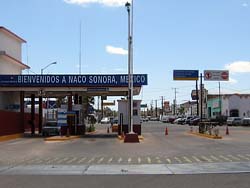
A Day in the Life of an Arizona Rancher
The Center for Immigration Studies is a wealth for immigration information. There topics include birthright citizenship, attrition/enforcement, costs of immigration, current numbers, environmental/population, illegal immigration, legal immigration, national security, polls/surveys and wages/jobs/poverty. An on camera interview with a rancher named Richard Humphries was viewed. He is a 22- year veteran of the 70 acre area on the border of Arizona and Mexico. He is an ex-police officer, who decided to take enforcement of immigration into his own hands. The clip contains several stories of surveillance, assistance to border patrol and border patrol disappointment. He re-tells a story that happened six or seven years ago where he was leaving his residence at the remote part of his property on an isolated dirt road called Ghost Town Trail, he spotted a truck with a large camper headed north. The truck contained three Hispanic gentlemen in the cab, and he could not identify whether anyone was in the camper area of the truck. His police instincts kicked in, and he quickly read the sign of magnetized misspelled words on the side of the truck. The name indicated that it was Tucson Company, but had a Phoenix number. He used his cell phone and called the number and verified that it was indeed in Phoenix. He began to call various border patrols and checkpoints in all of the various areas, he and the truck were traveling through. Each time he received the same response the border patrol were short-handed and could not help him, he even attempted to receive help from his previous employer, the Department of Public Safety. He was told that unless the truck was committing traffic violations or had a major defect they could not be involved. After more than 150 miles he received help from the Casa Grande Border Patrol. They captured 16 illegal aliens.
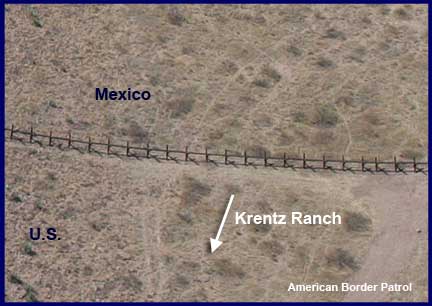
He has since built a 30 foot observance tower measuring at 10-feet by 10-feet fully equipped with night vision gear, radios, scanners, phone, and windows at every angle. He is comforted that he is able to have a better view of his property when alerted by his dogs of intruders. His front and back gate that surround his property contain border patrol locks. Whether he is home or not the officers can gain entry to help in their searches for illegal immigrants. The agents have also used his observance tower in their aid to finding escaped aliens. He stated that, “property owners appreciate the Border Patrol, but he wishes there was better communication between dispatch and the agents on route when they are called for apprehending of assumed illegal’s” (Humphries, 2011 A Day in the Life of an Arizona Rancher). The early encounters with illegal immigrants and border patrol have evolved into a working relationship between border patrol and the Department of Public Safety. A couple new vocabulary words that were learned during this research: quailed, which means to run away and coyote is defined as a smuggler.
The media clip conveys the life style of an Arizona rancher. The challenges, obstacles and dangers of living alongside the border of Mexico are a foreign concept to the many U.S. citizens who do not have to appreciate the rancher’s existence and the constant intrusion of Mexican citizens invading his property line, and more important, attempting to gain access to a place that is not permitted by law without going through the proper channels for entry. Because people are not the only cargo smuggled, it can be dangerous to get involved in helping stop illegal admission to the United States. Mr. Humphries views his 70 acre occupancy as an obligation of duty in aiding border patrol find and capture illegal immigrants. He was sincere and believable about his life and the attempts he makes to do his part (Kephart & Griffith, 2011 Center for Immigration Studies).
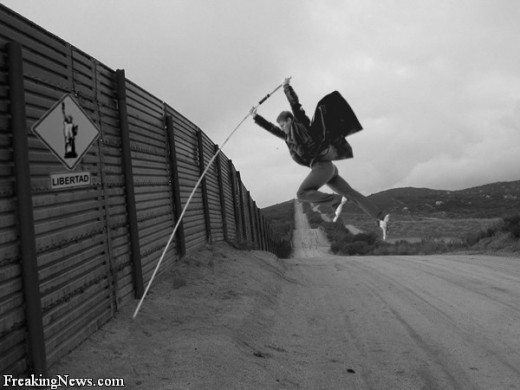
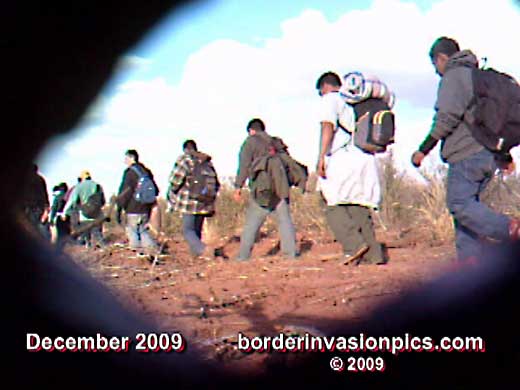
A Neutral View of Inequality
This media clip would help communicate a neutral view of discrimination, prejudice, and stereotyping. By watching the piece there stirred no feelings of any of these previously mentioned items. The feeling of compassion was realized for the property owner. It is- what it is. There are people, who are desperate to gain entry to the United States, unfortunately or fortunately dependent on one’s view, there are correct procedures to accomplish that feat. The video only helped the understanding of what living along the border must be like. “The cost of the federal government’s attempt to police the nation’s borders and locate illegal immigrants is sizable, there are significant costs for aliens and US born Hispanic citizens and documented workers may be unable to find work because employers wrongly believe that their documents are forged” (Schaefer, 2011).
(Part I) A Day in the Life of an Arizona Rancher: Fences, Illegal Aliens, and One Man's Watchtower

A Manager and Inclusion
A manager’s duty is to create an atmosphere of cultural inclusion. This can be accomplished in relation to Mexican illegal immigration by treating all employees equally, without prejudice, and stereotypical behavior. Checking all work documentation with due diligence not operating through paranoia or fear. By creating an environment where all employees belong, involvement and respect can be achieved. Happy and satisfied employees who feel included are productive employees. Productivity equals a larger bottom line, which translates to better- paid employees; a growing company trickles down to economy stimulation and helps everyone.
Illegal immigration continues to be a concerning topic in the United States. People, who live on the border that divides the Unites States from especially, Mexico, are on the front lines witnessing this war on undocumented aliens and smuggled drugs. It is easier to look at raw statistics rather than the people behind those numbers. It would be a difficult life to watch and aid in the capture and deportation of people. Many immigrants are trying to find a better place for themselves and their families, and the risk of the journey to the US comes with not only danger for their person, it means that they must also leave family members behind. It is going to be a difficult resolution for decision-makers to conclude, and one that will not be completed over night.
References
Kephart, J. & Griffith, B.(2011). A Day in the Life of an Arizona Rancher. Center for Immigration Studies. Retrieved March 20, 2011 from http://cisorg/videos/arizonarancher
Kirkwood, C. (2011) Ariz. Countersues Obama Admin.on illegal Immigration.Retrieved March 20, 2011 f
Schaefer, R (2011) Racial and Ethnic Groups, Census Update, Twelfth Edition. Chapter 4, Immigration.Watanabe, T., Gorman, A., & Riccardi, N. (2010) Arizona’s Crackdown on Illegal
ImigrantsFeels Familiar. Retrieved March 20, 2011 from http://articles.latimes.com/2010/apr/16/local/la-me-arizona17-2010apr17
Wittens & Nagtegaal (2006) Thoughts of a Conservative Christian. Budsimmons. Retrieved March 20, 2011 from http://dsimmons.wordpress.com/2006/1125/how-illegal-immigration-harms-arizona/









